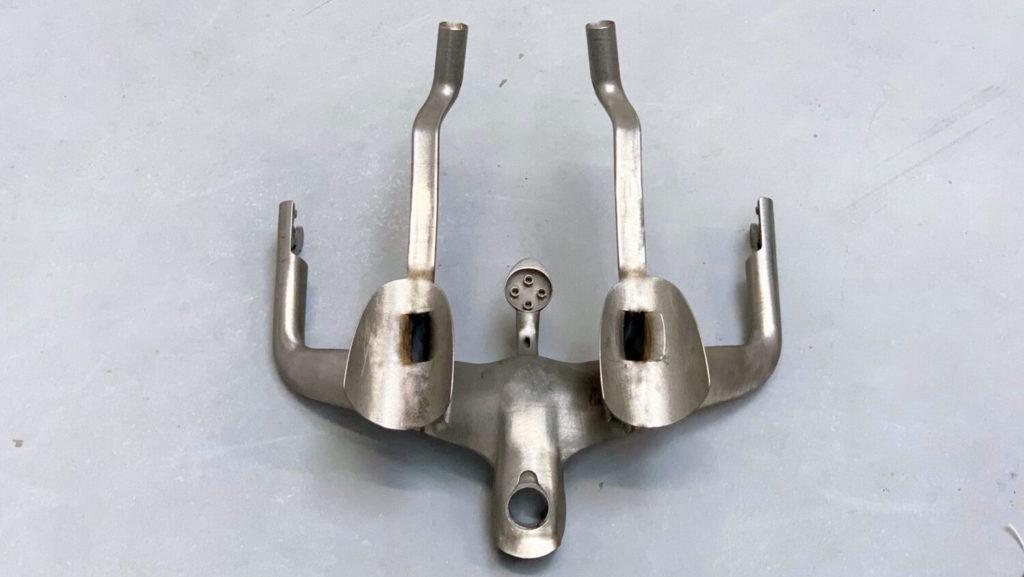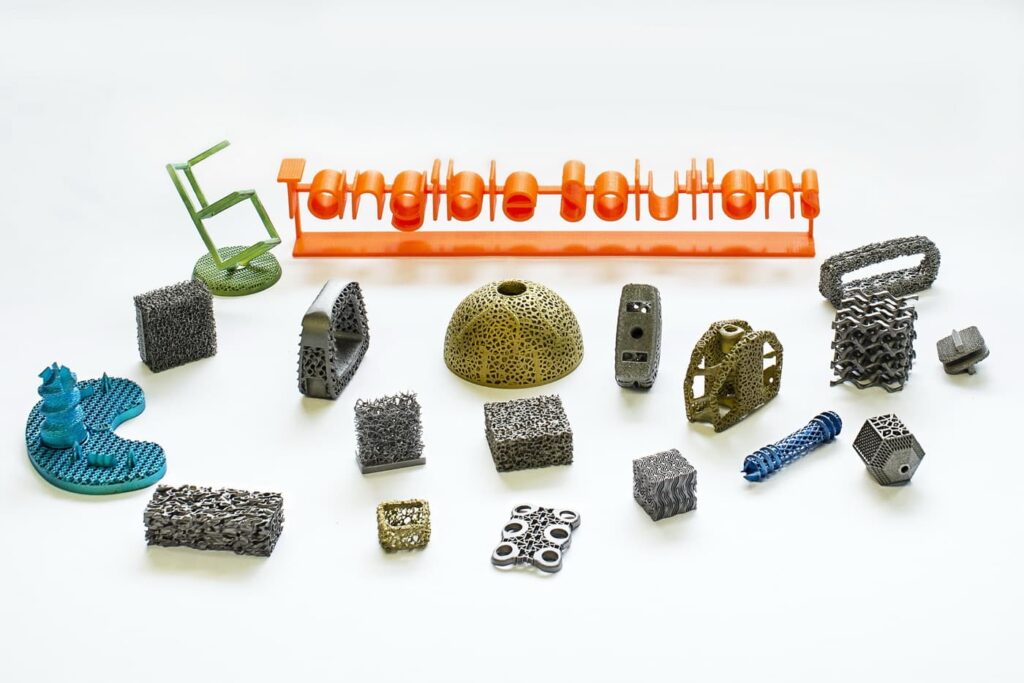A few years ago, I had a lovely discussion with Jos Burger about systems integrators in 3D printing. I bemoaned the lack of true systems integration companies. We had resellers and distributors but nobody who could build you a 3D printing factory for vat polymerization or material extrusion. We had no one that could take your industrial component and end to end implement it in a validated workflow replete with installation of equipment and training. No one out there could take your need to manufacture and turn it into a production line with customized powder bed fusion machines, material handling and QA. There were consultants and vendors but no one that could knit it at all together. Jos’s conclusion was that, based on his experience, this will take time, a decade or more. We both agreed that once these systems integrators were there they would be a real force multiplier for Additive.
We’re often looking at barriers to additive adoption or face a lack of applications or face delays in adoption. When faced with these issues we can assume that it is the speed of the machine, lack of functional materials or more that is holding us back. But, in reality often it is that we lack the, hirable, expertise to accelerate adoption. We simply can not call someone that will knit everything together so that the economics do work. We just can’t go out and hire people that optimize material extrusion settings and in house material fabrication so that a material extrusion shape becomes a worthwhile marketable part. We simply do not have groups of people laying about that can get you up to speed in metal additive in a few months. Over the past months we’ve seen some hopeful trends emerge that mean that we are getting systems integrators, only with different names. We’re seeing three remarkable trends that could really be a simulacrum for systems integrators and be a force multiplier for 3D printing.
Herds of Dinosaurs
As people with decades of experience in 3D Printing come close to retirement some unique talents are now available to hire. This is true in a lot of markets only if we look the years back the number of 3D printing employees was very limited. There are very few people with specific skillsets. So few people can step in somewhere with a decade or more additive experience in a particular field. The limited number of these people makes their skills very valuable. Did you know you could hire Bob Wood, who has over 17 years experience in binder jet production? Andrew Allshorn could be working for you. You could hire Duann who worked at nTop, Shapeways and Autodesk. You can hire Martin McMahon who was at Xaar, Renishaw and Sandvik if you want to know how to move powder. You can hire Kevin who did 3D printing at the FBI decades ago and now consults on metal additive. You can hire Shane Collins at Wohlers Associates, who was at CalRam, OPM, Additive Industries and worked on wafer packaging using SLA, in 2002. Bruno Le Razer has over two decades in metal printing expertise in aviation and more. If you work in rail you could hire Jennifer who implemented Additive at Wabtec. You could hire Rick Neff who helped commercialize BAAM. Or just hire Phil whose amazing at leveraging all sorts of metal 3D printing technology. Tim whose been with Wohlers over a decade. You could try Tom Fripp, who can develop medical products for you. Or you could hire Alex for all things Australian or innovative. Want help in medical quality, hire Erik Boelen. You could hire Dale Swarts who is a driving force behind Stryker´s implementation of Additive too. This list is far from exhaustive. There are people out there with very specific expertise that few others share. Through hiring them you could leap ahead with your additive implementation. A few years ago most of these folks were employed at major 3D printing firms, now they’re available. They’re not systems integrators per se but their bumps, bruises and scars could mean fewer for you.
End to End Services
Whereas general 3D printing service bureaus abound specific services that can help you industrialize your products are limited. If you’re reading this, please start a systems integrator for 3D printing. Alternatively start a manufacturing service that can take an idea and turn it into an approved product. These kinds of services don’t really exist yet. I would urge you to start specific product offerings for consumer electronics, IC, medical, automotive, naval, oil and gas and more. Specific industry knowledge, unique materials, unique certifications and ways of working mean that in a lot of markets a specific service is very valuable. PADT is the only product development firm I can think of with super deep additive knowledge. Feel free to suggest more in the comments! Zeda is a service specialized in spine and bringing spinal products to market. Tangible is a contract manufacturer but their expertise goes much deeper especially in titanium implants.
Amnovis is a Belgian firm set up specifically to take you from idea to manufactured metal implant. Metron is an engineering, design and manufacturing service for high end bicycle components. These services are very valuable and act as a force multiplier for 3D printing and we need more of them. To a certain extent large service bureaus like Materialise and erpro can do this. But, more market specific offerings and a more targeted solution will make it easier and more valuable,
Systems Fabulators
The fabulators are a new trend that took me way too long to notice. Divergent 3D is probably the most well known example of a fabulator. They combine a fabulous tale, fabulous manufacturing and fabrication together. Divergent has a vision, a lovely story and a path to new structures. It can work with you to use its manufacturing and skills to make lightweight 3D printed structures for your automotive brand. Its a systems integrator but with a much better story. Also rather than put itself in the contract manufacturer mindset it presents itself as a technology firm.
Through owning the technology and marketing its involvement with firms it is much better at branding and owning the customer relationship. Another example of this is Zellerfeld a hip shoe manufacturer that uses TPU and desktop 3D printers to 3D print shoes. It markets itself to the shoe industry as a bridge to 3D printing. Nagami is a design studio. But, Ecoalf went to it in order to do the printing and design for a store. Here it functions as systems integrator or contract firm would but with much more flair, and one would think, higher margins too.
Conclusion
We need to adopt additive faster. An end to end service that for a fee would commercialize 3D printed ideas into products, a AMUG Dino that you could hire to help you get there or you could work with a new breed of Fabulators that couple narrative with manufacturing. In all three of these cases you could go from an idea to a product without having to buy machines and learn everything yourself. You could accelerate your time to market and avoid a lot of errors. These new systems integrators could be a real force multiplier for our market and accelerate our overall growth.
Subscribe to Our Email Newsletter
Stay up-to-date on all the latest news from the 3D printing industry and receive information and offers from third party vendors.
You May Also Like
Precision at the Microscale: UK Researchers Advance Medical Devices with BMF’s 3D Printing Tech
University of Nottingham researchers are using Boston Micro Fabrication‘s (BMF) 3D printing technology to develop medical devices that improve compatibility with human tissue. Funded by a UK grant, this project...
3D Printing Webinar and Event Roundup: April 21, 2024
It’s another busy week of webinars and events, starting with Hannover Messe in Germany and continuing with Metalcasting Congress, Chinaplas, TechBlick’s Innovation Festival, and more. Stratasys continues its advanced training...
3D Printing Webinar and Event Roundup: March 17, 2024
It’s another busy week of webinars and events, including SALMED 2024 and AM Forum in Berlin. Stratasys continues its in-person training and is offering two webinars, ASTM is holding a...
3D Printed Micro Antenna is 15% Smaller and 6X Lighter
Horizon Microtechnologies has achieved success in creating a high-frequency D-Band horn antenna through micro 3D printing. However, this achievement did not rely solely on 3D printing; it involved a combination...


































